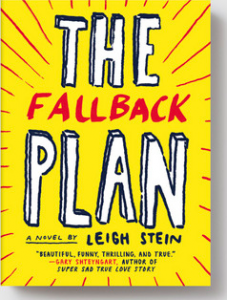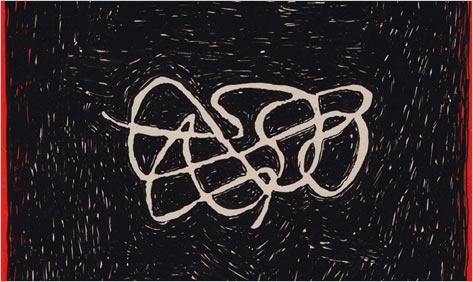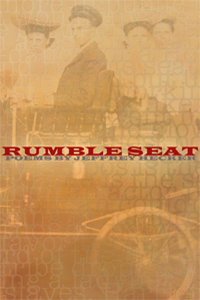Interview with Leigh Stein (2)
 Leigh Stein’s laugh-out-loud-funny first novel, The Fallback Plan, is about a girl named Esther who has just graduated from college and, for lack of anything better to do, takes a job babysitting for a girl named May, whose parents, Nate and Amy, lost their first child a few years before. Bored, Esther spends a lot of time imagining a Chronicles of Narnia redux, featuring panda bears.
Leigh Stein’s laugh-out-loud-funny first novel, The Fallback Plan, is about a girl named Esther who has just graduated from college and, for lack of anything better to do, takes a job babysitting for a girl named May, whose parents, Nate and Amy, lost their first child a few years before. Bored, Esther spends a lot of time imagining a Chronicles of Narnia redux, featuring panda bears.
HTMLGIANT: One thing I am thinking about writing about it is about doors. The Fallback Plan has some good ones — the door to the dead child’s room, the door to the studio, the panda’s doorway to the other world, the father’s security concerns, the throwing of keys, and the whole book represents Esther’s passage into adulthood. Was there anything intentional you were thinking about the doors when you were writing this?
Leigh: I wasn’t thinking intentionally about doors…I wish I was! That would make me seem so smart. One thing I do sometimes to test my memory is try to remember doorknobs. Like in the house I lived in until I was 13 or 14, the doorknobs were very particular (inspiring the doorknob to the attic in my novel) and by remembering them, I feel like I still hold on to a little piece of that house.
Issue 2 of Aesthetix, a journal that asks poets to submit poems of a specific title each issue, is live for “Arrow,” including new work from Melissa Broder, Mark Leidner, Emily Kendal Frey, Nick Sturm, Seth Landman, Bruce Covey, Ben Mirov, Noelle Kocot, Noah Falck, more.
Interview with Leigh Stein, who wrote The Fallback Plan
 Leigh Stein’s laugh-out-loud-funny first novel, The Fallback Plan, is about a girl named Esther who has just graduated from college and, for lack of anything better to do, moves in with her parents. She takes a job babysitting for a girl named May, and she has a tepid affair with May’s father. She also has a crush on a guy named Jack, and they have sex, and right before they do it Esther tries to think about something sexy, so she thinks about a Winnebago. It’s with that in mind that I asked Leigh Stein to do this interview. I only had one question.
Leigh Stein’s laugh-out-loud-funny first novel, The Fallback Plan, is about a girl named Esther who has just graduated from college and, for lack of anything better to do, moves in with her parents. She takes a job babysitting for a girl named May, and she has a tepid affair with May’s father. She also has a crush on a guy named Jack, and they have sex, and right before they do it Esther tries to think about something sexy, so she thinks about a Winnebago. It’s with that in mind that I asked Leigh Stein to do this interview. I only had one question.
Me: Wait, are Winnebagos sexy?
Leigh: Winnebagos are sexy for the following reasons:
1. They suggest adventure, the romance of the open road, Americana.
2. You could say “Let’s run away!” to your loved one, and then actually do it in one of these.
3. A bed + a motor vehicle = sexy.
I can’t recommend this novel, and this manner of thinking, any more highly than I already do.
YOU DON’T NEED PERMISSION

Speaking of Egon Schiele and “Adrien Brody,” Jezebel ran an exclusive exposé in November about the novel You Deserve Nothing, by Alexander Maksik. You Deserve Nothing is about a thirty-something teacher at an American international school in Paris who has an affair with, and impregnates, one of his seventeen-year-old students. Turns out (according to Jezebel) Maksik was a teacher at an American international school in Paris who had an affair with, and impregnated, one of his seventeen-year-old students.
Mistletoe and Misanthropy Out On a Limb: Jeffrey Hecker’s Rumble Seat
 Rumble Seat
Rumble Seat
by Jeffrey Hecker
San Francisco Bay Press, 2011
78 pages / $14.99 Buy from Amazon or San Francisco Bay Press
“If I die during a crossword puzzle, I am allowed to finish.” So nearly concludes Rumble Seat, a Cretan-cum-Cracker Jack maze of delights presided over by the shade (elms over David Lynchian suburbia, not ghost) of Frank O’Hara. What happens when boy-next-door niceness merges with a rapier wit? You can’t ask David Foster Wallace anymore, but Jeffrey Hecker’s debut volume is a thoroughly selcouth exploration into the question. It’s a world where down-to-the-last-dime travelers can choose between “Basilica donation or acetaminophen, but largesse and simony lose by a Samson pubic strand”; where toothless soothsayers skulk around local churches, warning children that “dying during worship causes souls to suck through aperture.” We may be any number of places with Hecker: at a beef recall (as opposed to a southern-style pig pickin); with a transmogrified Sally Field with her “hair departed in buffalo tufts/intentions and glands in the wrong places/pituitaries topped off by kidneys”, bloodshot eyes leading the children of lost Roanoke colonists astray…but mostly at home, where strangeness, like charity, begins.
READ MORE >
January 9th, 2012 / 12:00 pm
How Many Movies Are There?
First, it depends on what you consider a movie. If you define “cinema” as broadly as I do, then the answer is probably “countless.” So let’s pick something more discrete: feature films (which is what most people mean, anyway, when they say “movie”).
There’s no hard and fast rule as to what constitutes a feature. The term itself is a relic of theater-going: the feature film was the featured film—it was what the theater advertised outside, and presumably what compelled you to purchase a ticket and enter—as opposed to the various newsreels, cartoons, and serial installments that also ran (and then, eventually, stopped running). Theater-going in 2012 seems an increasingly old-fashioned hobby (see Roger Ebert’s recent article on declining ticket sales), but we still use the word to mean “a long film.”
But how long? The Wikipedia informs us:
The Academy of Motion Picture Arts and Sciences,[1] the American Film Institute,[2] and the British Film Institute[3] all define a feature as a film with a running time of 40 minutes or longer. The Centre National de la Cinématographie in France defines it as a 35 mm film longer than 1,600 metres, which is exactly 58 minutes and 29 seconds for sound films, and the Screen Actors Guild gives a minimum running time of at least 80 minutes.[4] Today, a feature film is usually between 80 and 210 minutes[citation needed]; a children’s film is usually between 60 and 120 minutes[citation needed]. An anthology film is a fixed sequence of short subjects with a common theme, combined into a feature film.
Let’s go with that 40-minute cutoff. Are we ready to start counting?


